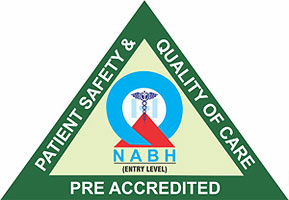+91-7291089674 (Bandra)
+91-7291092120 (Kandivali)




July 26, 2021 | Author: Admin
It is believed that cataract only occurs in older people. However, children can also be born with a cataract & it may develop gradually with age. Pediatric cataract is one of the leading cause of childhood blindness. Cataract will cause a social and economical burden on the child and family if left untreated.
In cataract, the lens of the eye becomes opaque and causes cloudy vision. The lens is situated behind the pupil. The pupil is a dark circle present in the centre of the eye. The natural lens allows the light to pass through it and get focused on the retina, a tissue present at the back of the eye.
A cataract is a condition in which the lens of the eye becomes cloudy. The lens of the eye focuses the image onto the retina. Then the brain gets the image through the retina. Cataract interrupts the light from reaching to the retina. It also scatters the light and makes the image distorted resulting in blurred vision.
Yes, cataract also develops at a young age and is known as childhood cataract. Childhood cataract may be congenital or developmental. A congenital cataract is present from birth whereas developmental cataracts are diagnosed in older babies and develop in later age.
Babies at a very young age will not able to complain about the symptoms of cataract. However, if your child is old enough, he may complain to you about the following visual symptoms
There might be many reasons for the development of cataract in children. Some of them are as follows
Removal of the cloudy lens is the only way to get rid of cataract. The cataractous lens can be removed by surgery. The eye doctor will replace the cataractous lens with an artificial lens.
During this procedure doctor will have to give the child general anaesthesia. Then through a small incision the lens is liquified through special equipment and instrument like phaco probe and sucked out of the eye.
Your child may require contact lenses and eyeglasses after the surgery if operation needs to be done in infancy or below 18 months of age. If done after 18-24 months, an intra ocularlens can be implanted after removing the cataract.
If a cataract doesn’t affect your child’s vision there is no need for any surgery. However, surgery is required when a cataract will interrupt the normal sight and development of your child.
It is recommended to remove the affected lens as soon as possible. Affected cataractous lens may require to exchange with an artificial lens during surgery.
Childhood cataract is a rare condition. The prediction of improvement in a child’s vision after treatment is difficult. Many children experience problems in the affected eye even after the treatment. However, most of the children will not face any vision-related problems. They can go to school and live a normal life.
Meanwhile, cataract surgery is usually successful but some children may experience some complications such as lazy eye which would need further treatment.
The first few months of life is a critical period of visual development. It becomes extremely important to treat cataract in early childhood. At this time the brain of the child starts to recognize and respond to the clear images. If the vision of a child is blurry or distorted the brain will acknowledge abnormal visual signals which will affect normal visual development.So appropriate treatment of cataract in early childhood is required. It can give better results and improve the child’s future vision.
https://www.webmd.com/eye-health/cataracts/cataracts-in-babies-and-children
https://www.verywellhealth.com/congenital-cataracts-vision-loss-babies-children-4173482
https://www.ncbi.nlm.nih.gov/pmc/articles/PMC5742962/
https://www.mayoclinic.org/diseases-conditions/cataracts/symptoms-causes/syc-20353790
https://www.aao.org/eye-health/diseases/what-are-pediatric-cataracts
https://www.nhs.uk/conditions/childhood-cataracts/
https://www.jcor.in/article.asp?issn=2320-3897;year=2016;volume=4;issue=1;spage=13;epage=18;aulast=Nikhil#:~:text=Results%3A%20Three%20hundred%20and%20sixteen,in%2086%20eyes%20(49.1%25).
https://www.nhs.uk/conditions/childhood-cataracts/complications/